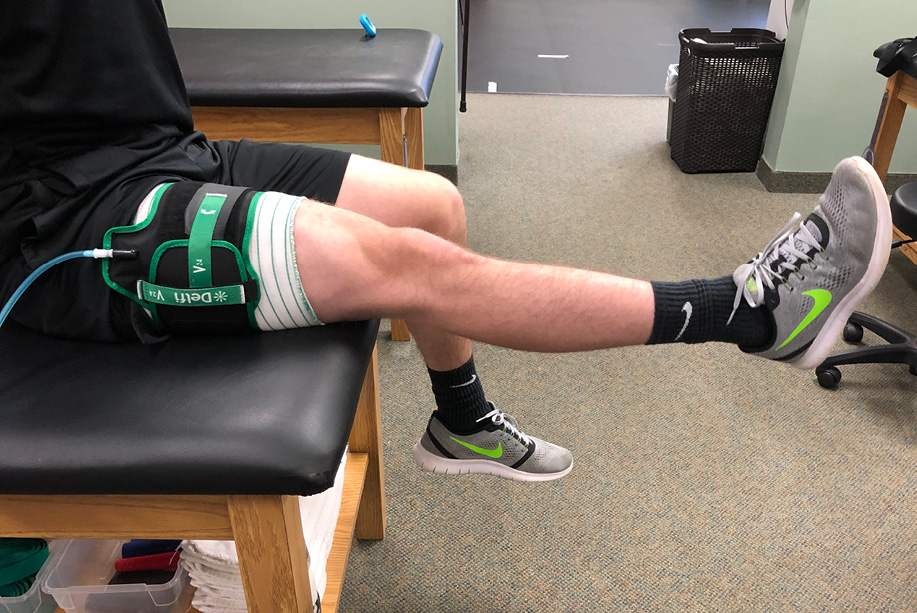Customized blood circulation restriction rehabilitation training (PBFR) is a game-changing injury recovery treatment that is producing dramatically positive outcomes: Diminish atrophy and loss of strength from disuse and non-weight bearing after injuries Increase strength with only 30% loads Boost hypertrophy with only 30% loads Enhance muscle endurance in 1/3 the time Improve muscle protein synthesis in the elderly Improve strength and hypertrophy after surgery Enhance muscle activation Boost development hormone actions.
Muscle weak point frequently happens in a range of conditions and pathologies. High load resistance training has actually been shown to be the most successful means in improving muscular strength and getting muscle hypertrophy. The issue that exists is that in particular populations that need muscle strengthening eg Persistent Pain Clients or post-operative patients, high load and high intensity workouts may not be medically suitable.
It has actually been used in the gym setting for some time however it is gaining popularity in scientific settings. BFR training was at first developed in the 1960's in Japan and known as KAATSU training.
It can be applied to either the upper or lower limb. The cuff is then pumped up to a specific pressure with the objective of acquiring partial arterial and total venous occlusion. The client is then asked to carry out resistance exercises at a low intensity of 20-30% of 1 repetition max (1RM), with high repetitions per set (15-30) and short rest intervals between sets (30 seconds) Comprehending the Physiology of Muscle Hypertrophy. [edit modify source] Muscle hypertrophy is the increase in size of the muscle in addition to an increase of the protein material within the fibres.

Muscle tension and metabolic tension are the 2 primary elements responsible for muscle hypertrophy. The activation of myogenic stem cells and the raised anabolic hormonal agents result in protein metabolism and as such muscle hypertrophy can occur.
Insulin-like growth element and growth hormonal agent are accountable for increased collagen synthesis after workout and help muscle healing. Growth hormone itself does not straight trigger muscle hypertrophy however it aids muscle healing and consequently potentially helps with the muscle reinforcing procedure. The accumulation of lactate and hydrogen ions (eg in hypoxic training) additional increases the release of development hormone.
Myostatin controls and hinders cell growth in muscle tissue. Resistance training results in the compression of blood vessels within the muscles being trained.
When there is blood pooling and an accumulation of metabolites cell swelling happens. This swelling within the cells causes an anabolic reaction and results in muscle hypertrophy.
The cuff is put proximally to the muscle being exercise and low strength workouts can then be carried out. Due to the fact that the outflow of blood is limited using the cuff capillary blood that has a low oxygen content gathers and there is a boost in protons and lactic acid. The exact same physiological adaptations to the muscle (eg release of hormonal agents, hypoxia and cell swelling) will happen during the BFR training and low intensity exercise as would accompany high intensity workout.
( 1) Low intensity BFR (LI-BFR) results in an increase in the water material of the muscle cells (cell swelling). It also speeds up the recruitment of fast-twitch muscle fibres. It is also assumed that when the cuff is eliminated a hyperemia (excess of blood in the capillary) will form and this will trigger further cell swelling.
These boosts resembled gains obtained as an outcome of high-intensity workout without BFR A research study comparing (1) high intensity, (2) low strength, (3) high and low strength with BFR and (4) low strength with BFR. While all 4 exercise regimes produced boosts in torque, muscle activations and muscle endurance over a 6 week period - the high strength (group 1) and BFR (groups 3 and 4) produced the best impact size and were similar to each other.